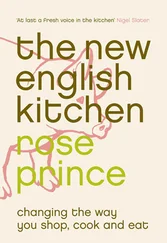It’s not wholly offensive to mention in the same breath that it would be nice if some fair trading went on at home. Dairy and other livestock farms will become extinct in the UK unless a fair price is paid for milk by the main dairies and the supermarkets that buy from them. If there were no livestock farms in the UK, we would end up with a landscape that was a mixture between a national park and a weed-infested wilderness, and a diet of 100 per cent imported meat.
The workforce and other people
When travelling around fruit and vegetable farms in the UK, it is impossible to miss the flexible workforce – the pickers and labourers without whom weeding and hand harvesting would be impossible. But it is also clear that the farms that are happy for a journalist to tour their premises and talk to their staff are unlikely to have much to be ashamed of. There are some excellent schemes for students, and in Jersey the relationship between the Madeira workers and the potato growers is good: living conditions are warm, in substantially built cottages, and the families earn enough from January to June to sustain their lives on the island of Madeira during the rest of the year.
But there are gangmasters who break every rule, exploiting the desperation of workers who want a life in Britain. They pay below the minimum wage and operate no limits to working hours. As a shopper, it is difficult to know who picked your carrots. Supermarkets say they try to keep track, but in practice this is hard to do. The new gangmaster laws that came in after the drowning of the cockle pickers at Morecambe Bay in 2004 are yet to be properly tested.
The tragic reality is that the children of today’s farmers are less and less likely to follow their parents into the business; indeed many are actively discouraged by their parents, and the workforce of the future is likely to be more and more made up of immigrant workers who will work for lower wages. The same workers are employed in processing plants and abattoirs, and as usual they are doing the filthy, tedious jobs. So we have a conundrum. We want to buy British, but buying British may encourage poor practice. If there is a solution, it is to seek out the vegetable box scheme or the farm that opens its doors to scrutiny. Food from such places will cost more, so it is a case of eating the cheaper-to-grow produce, choosing seasonally to get the best value from gluts, and perhaps deciding that pulses are going to play a greater part in your diet.
In exporting countries, the workforce question is also a serious matter, along with the wider impact of food production on populations. Poor monitoring of pesticide use is a much greater problem outside the UK and large numbers of people can be affected, including children – and child labour. Water supplies can be hijacked or polluted by unscrupulous industries; land is acquired from tribal populations who have only a few historical rights to it, their natural habitat subsequently flattened to make way for industrial farming. Information about such practice does filter back, however, and shoppers have a chance to boycott foods whose production causes people suffering.
Artificial additives do not turn up in food because shoppers need them but because the food industry needs them for economic reasons. While it is understandable that manufacturers should want to profit from their business, the liberal use of colourings, flavourings and preservatives has gone too far. Additives are in much of the food targeted at children. They warp the concept of natural taste, inducing ignorance of the real thing. They have been proven to alter behaviour, and some are known allergens.
Additives are divided into various categories. The largest groups are colours, preservatives, antioxidants, sweeteners, emulsifiers, gelling agents, stabilisers and thickeners. Then there is a smaller number each of acids, acidity regulators, anti-caking agents, anti-foaming agents, bulking agents, carriers and carrier solvents, emulsifying salts, firming agents, flavour enhancers, flour treatment agents, glazing agents, humectants, modified starches, packaging gases, propellants, raising agents and sequestrants.
The food industry is preoccupied with using appearance to attract customers, and also with the stability of food and its shelf life. It is unfair to blame only the manufacturers when retailers are after the same thing. Shoppers do not ask, however, for the plethora of innovations that appear on shelves on a daily basis. The food industry will always say it is supplying demand, identifying what shoppers want. I think this is rubbish. Supermarkets in particular have created a demand, identifying a weakness for novelty in bored supermarket shoppers (and especially their children), and have risen to it with some alarming imaginings. ‘Meal solutions’, they call them – but have you ever heard someone say, ‘What I really need is a Thai spiced shepherd’s pie topped with a feta cheese and ginger parsnip mash’?
Ready-made food can be great – if it is made with good-quality ingredients and nothing else. Even a sausage needs no more than salt as a preservative. However, it will have a shorter shelf life, and buying additive-free food means shopping more frequently – although I make good use of a small chest freezer for bread, sausages and baked things.
Additives are listed on labels, either in code as E numbers, with their industry name, or – if permitted – a common name. This can be confusing. For example, a label can show monosodium glutamate, flavour enhancer or E621 – these are all the same additive.
Manufacturers use different names for additives such as monosodium glutamate because they are controversial. Flavour enhancer sounds so great, don’t you think? The flavour of your food has been enhanced. Terrific, you think, just what it needs. But it doesn’t – or it wouldn’t if the manufacturers used ingredients with real flavour. A ready-meal maker’s greatest ambition is to put as much water and other cheap ingredients such as modified maize starch as possible into a recipe, and they get away with it by tipping in salt, flavourings, colour, gelling agents, stabilisers, emulsifiers, in fact anything that will hide the fact that these bulk ingredients have no texture or flavour.
The organic sector uses some additives, although nothing like as many as conventional manufacturers. Under the Soil Association’s standard, organic producers can use 30 additives (the EU permits 35) including gum fillers, emulsifiers, preservatives and one colour (annatto).
There is a gaping discrepancy between parents’ anecdotes about the effect of additives on their children and the constant reassurance from the industry that these additives are non-toxic. But the point is missed. The kind of reactions seen in children to certain colours, flavourings, sweeteners and preservatives are allergic reactions, and food additives are tested only for toxicity. In 2002 a government-sponsored study monitored 277 three-year-olds from the Isle of Wight for the effects of additives, which were given in orange juice along with placebos. Many parents of children given additives reported significant changes in mood and behaviour. The additives tested included the artificial food colourings tartrazine (E102), sunset yellow (E110), carmoisine (E122), and ponceau 4R (E124), plus the preservative sodium benzoate (E211). Test doses were well below the levels permitted in children’s foods and drinks yet still the allergic reaction certain children showed was significant. But while the authorities commissioned another report, insisting this one was inconclusive, it is noticeable that manufacturers have mostly removed the ‘Filthy Five’ from children’s food.
Not all E-numbered additives are bad. Some, such as ascorbic acid (E300), are simply vitamin C. E-numbers are additives approved by the EU and their effects on our bodies vary.
Читать дальше












